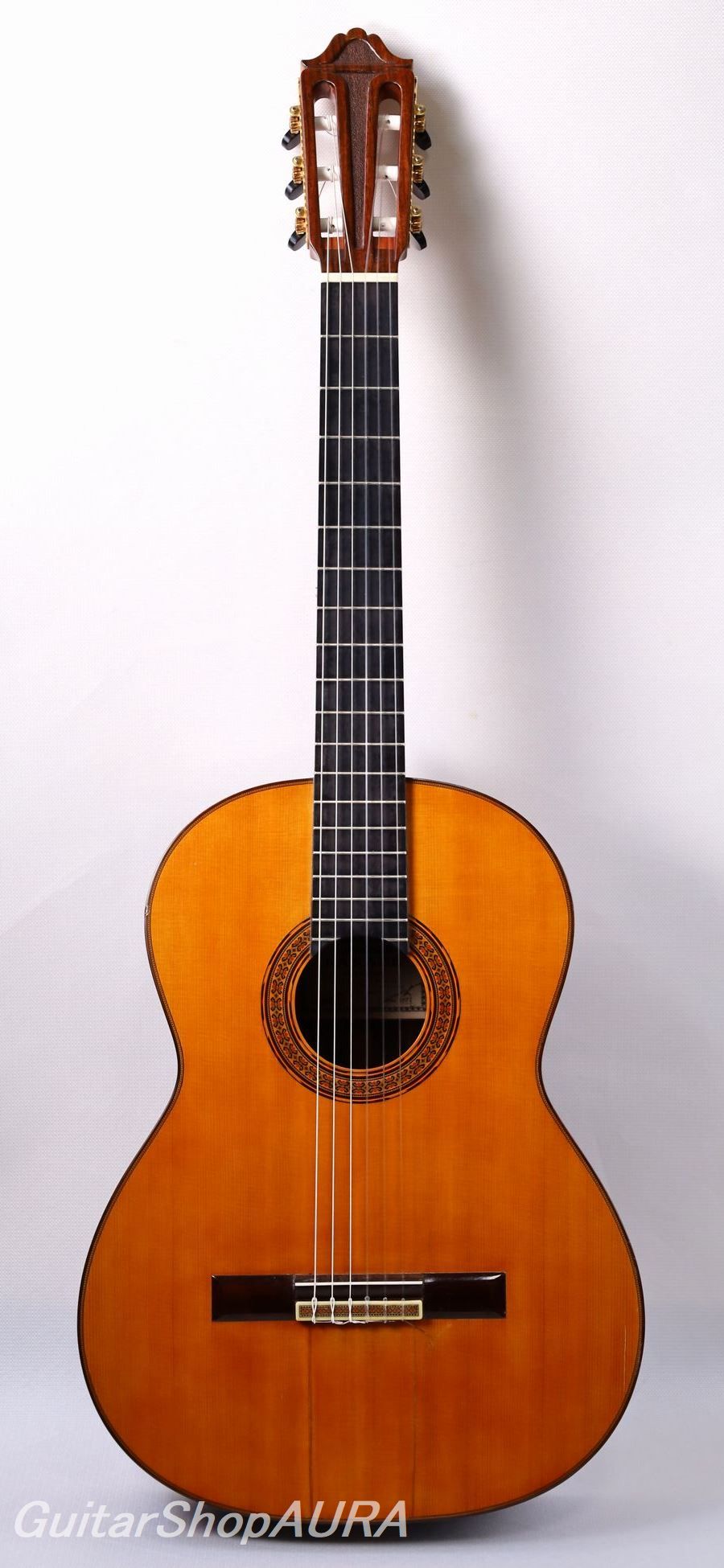
| Instrument | Toshihiko Nakade |
| Category | Japanese Classical Guitars 〔Vintage〕 |
| Number/Model | No.1000A |
| Scale length | 655mm |
| Country | Japan |
| Year | 1971Year |
| Top | Solid Spruce |
| Side&Back | Solid South American Rosewood |
| Condition※ | 6 |
| List price | INQUIRE |
| Price (tax included) | Please Inquire |
| option | with Hardcase |
Click to enlarge the photos below
Neck:Mahogany
Fingerboard:Ebony
Finish:Cashew
Tuning Machine:GOTOH
String height:1string 3.0mm/6string 4.2mm
[Profile]
Born in Tokyo in 1932. The second son of Sakazo Nakade (1906-1993), the leader of
Japan Vintage. Under the training of his father, he started making violins and guitars at the
age of 16, and five years later he became devoted to making guitars. After that, in 1968, he
moved to Spain and entered the workshop of Madrid maker Hernandez y Aguado. The
influence of his two master craftsmen became decisive for him and clearly directed his own
subsequent production philosophy. It is clearly shown in the decoration, structure, and
timbral characteristics, and the guitar with his unique personality has gained popularity due
to its powerful sound and rich expression.
His guitar, which is a representative of Japanese brands with a Spanish atmosphere, has
become a popular item overseas as well as his father Sakazo.
[Description]
We have just received the No.1000A model made by Toshihiko Nakade in 1971. The back
and sides are made of Central and South American rosewood, and the head is elaborately
crafted in a design that truly reflects the influence of his mentor, Aguado. Although this
guitar was made shortly after his return from training in Spain, it already has the elements
that would characterize his guitars in later years.
It has plenty of volume, rich overtones, and a bright sound. He has developed a Spanish
image that may have arisen from his own experiences, which gives the instrument a fuller
identity. Furthermore, the single notes have a rich and full sound, probably due to the years
of playing, and the richness of the singing is very attractive.
There is a history of crack repair to the bottom of the bridge on the 1st string side and 6th
string side. There is also a crack on the bottom of the treble side of the sound board. These
have been reinforced with patches from the inside. There are some other deep scratches,
dents, and play marks. The overall finish is cashew, and there are some minor weather
checks on the painted surface due to age, but there are no problems with use.